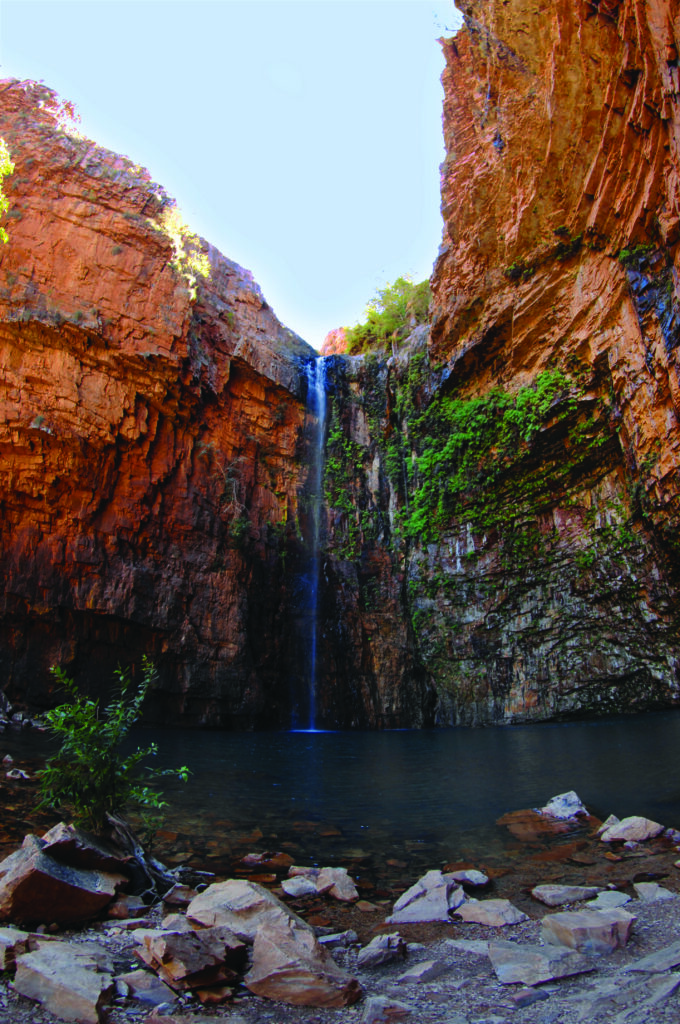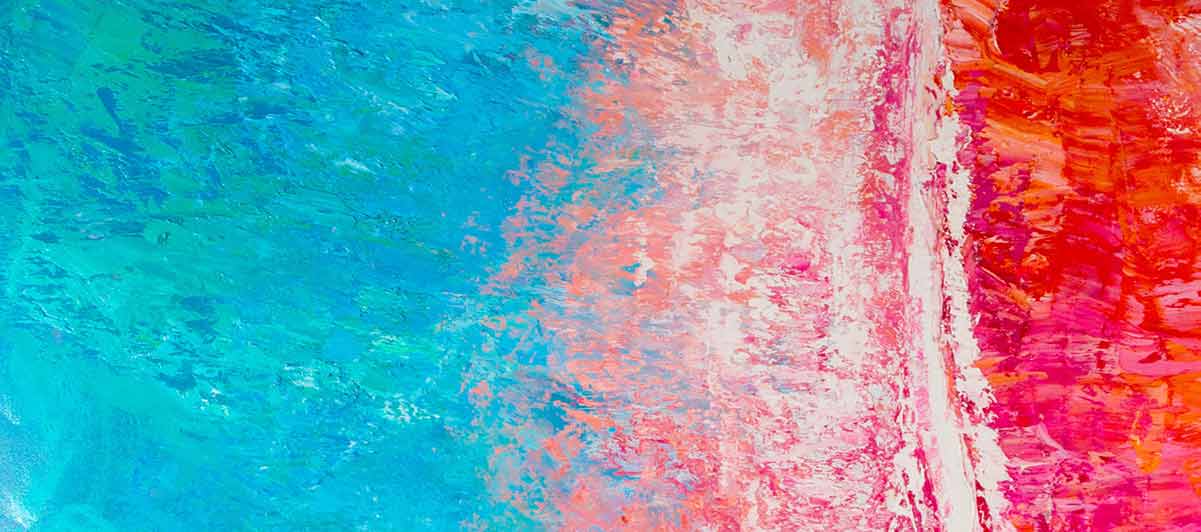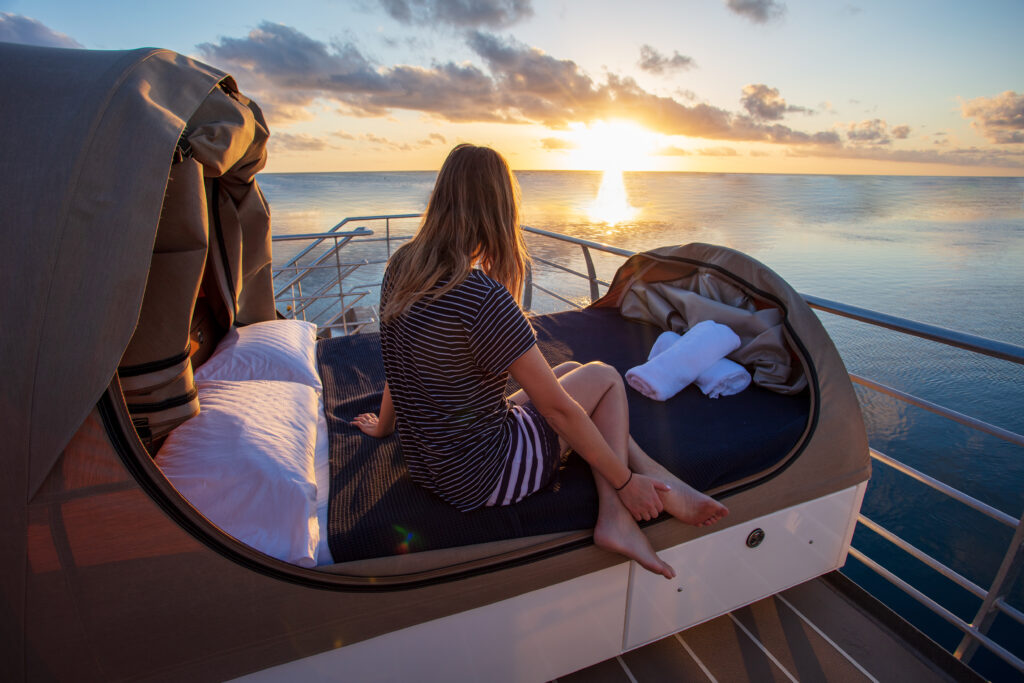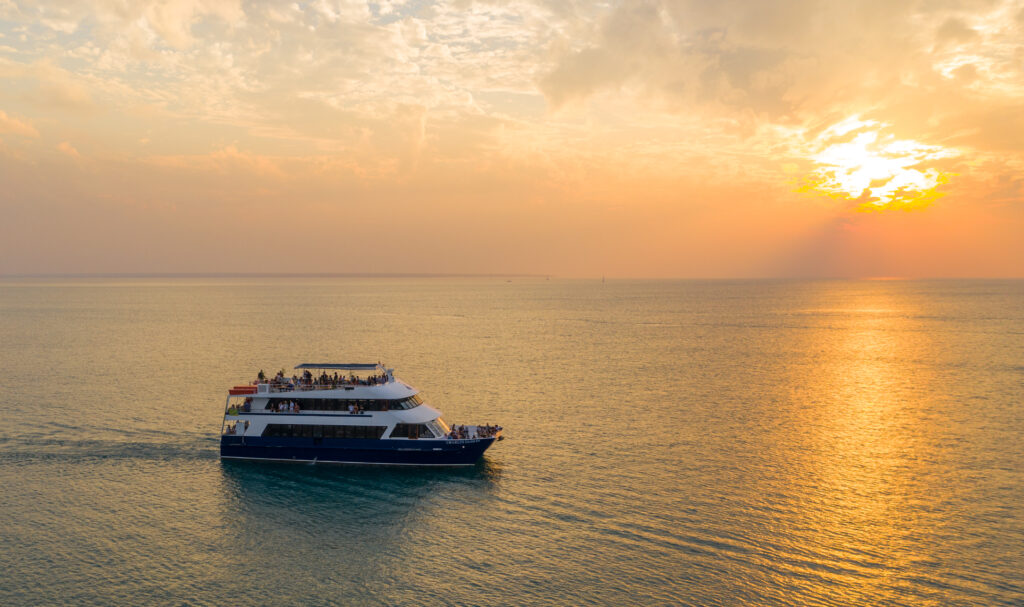LOCATED IN ONE OF THE WORLD’S LAST GREAT WILDERNESS AREAS, EL QUESTRO IS A NATURAL PLAYGROUND FULL OF HIDDEN WATERHOLES, STUNNING VIEWS AND PLAYFUL WILDLIFE JUST WAITING TO BE DISCOVERED.
WORDS: Alexis Buxton-Collins
I’m halfway across Moonshine Creek when I suddenly freeze. Water gently burbles between my feet, and massive walls of red sandstone tower over me on either side. Billions of years of geological change are revealed in these cliffs; layers of sediment buckled and folded by vast forces in the distant past. I’ve been so immersed in this wild landscape that I failed to notice my every move was being watched.
On the far bank, a diamond-banded Mertens’ Water Monitor warily eyes me from a slab of rock before languidly entering the water, everything but the tip of its head submerged as it continues to dart its tongue out and track my progress. I’m lucky to spot one of these beautiful lizards as their numbers have declined precipitously in recent years, but that’s not what’s brought me on this early morning hike.
Around the next corner, my destination reveals itself: Zebedee Springs, a natural thermal spring found in El Questro Wilderness Park, a 700,000 acre natural playground that lies at the eastern terminus of the famous Gibb River Road, in Western Australia’s Kimberley region.
Surrounded by beautiful Livistona palms, the springs cascade over and around fallen boulders to form large pools of gin clear water shaded by the fronds of pandanus and palm trees that sprout directly from these natural hot tubs. In the shadows of sheer sandstone cliff and sheltered by thick vegetation all around, it feels like I’ve entered a lost world. But that’s the magic of El Questro Wilderness Park, where a new discovery awaits at the end of every track.
This palm-fringed oasis is all the more spectacular because of what surrounds it. The Kimberley is undeniably beautiful but there’s a starkness to this often parched landscape.

Broad savannahs of dry cane grass are punctuated by pincushions of spinifex and otherworldly boab trees whose bulbous trunks terminate in skeletal clusters of bare branches. Looming over it all is the ancient Cockburn Range, a 600 metre high plateau of snow white sandstone stained red and brown by oxidation. From a distance, it looks like an impenetrable wall, but the beauty of El Questro is that every fissure and crack in the rock seems to shelter an isolated pocket of rainforest or a hidden waterfall.
Perhaps the most beautiful of them all is Emma Gorge, which sits at the end of a rocky path showcasing every aspect of this beguiling landscape. From flat grassland, the trail follows a languid creek through savannah woodland that turns into rainforest as the vertical cliffs slowly close in and blot out all but a sliver of sky overhead. At the end of the track, brilliant green hanging-gardens adorn the walls of a natural amphitheatre with a thin waterfall so tall that it turns into a fine mist by the time it reaches the broad circular swimming hole below.
Unlike Zebedee Springs, this pool isn’t heated and the temperature is a pleasant shock after walking in the warm sun. Paddling around to warm up, I discover the wall of vegetation hides small overhangs releasing innumerable natural showers that have been filtered and warmed by the stone. Even the hidden waterholes in this part of the world have their own secrets if you stay long enough.

It would take a week to follow every one of the walking trails crossing El Questro, but after several days of exploring on foot I decide it’s time to take a break and let one of the guides show me around. Exploring Chamberlain Gorge by boat provides an opportunity to examine the meticulously layered deposits of 1.8 billion year old sandstone on either side. These burnt orange cliffs reveal their secrets far more easily than the glassy green water below, which my overactive imagination soon populates with ravenous saltwater crocs. So I assume the guide is joking when he announces that it’s feeding time.
Seeing my worried look, he assures me the resident archerfish are unlikely to take my arm off. These cheeky little creatures have learned to spit jets of water that stun insects in mid-air and bring them down to the water’s surface where they can be gobbled up. In recent years, they’ve discovered that pellets of fish food held up by tourists make even easier prey.
I lean out cautiously with a pellet, keeping an eye on the water and almost jump out of my seat when I cop an expertly directed faceful of fish spit. Lesson one when feeding archerfish: hold the food away from your face. Trying again, I quickly realise lesson two: staying dry is impossible. Streams of water shoot upwards from every direction and all around me people are giggling as they watch this one-way water fight. Before long, the feeding frenzy has attracted larger catfish and barramundi and the archerfish become more elusive.
“You can feed the barra as well if you like,” the guide calls out as one breaks the surface and snatches some food straight from his hands. “Who wants to have a go?” I decline, as I’m rather attached to my fingers. Soon, I’m able to put them to better use trying to point out some of the expertly camouflaged rock wallabies hiding in the small caves discreetly hidden in the rock walls on either side of this beautiful gorge. The Kimberley may be famous for its vast, empty spaces but spend some time in the canyons and gorges of El Questro and it seems that there’s life everywhere you look.


